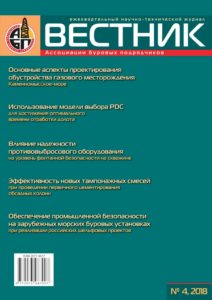PRACTICAL USE OF THE MODEL FOR SELECTING THE BEST PDC BIT AND DETERMINING THE OPTIMAL TIME FOR ITS WORKING
Lipatnikov A.A. – Head of Drill bits Service Department, LLC ISC PetroEngineering, lipatnikov_aa@iscpetro.ru lipatnikov_aa@iscpetro.ru
УДК 622.24.051.62
Key words: Drill Bit, PDC, bit wear, dull grading, optimization criteria, minimum cost per meter of penetration, maximum bit run speed, selection of the best bit, bit maintainability, durability.
The issues of practical use and further improvement of the approach of the LLC «ISC «PetroEngineering» company for PDC bits selection and the optimum time determination for their work are considered. When testing competing bits, one of the additional limitations of the model is their actual durability. This article proposes an approach for prediction the durability of bits on the basis of PDC bits dull grading guide in field conditions. A numerical example of the model implementation were performed with additional constraint. The results obtained were compared with the values of the criteria found earlier. A model correction is proposed, aimed for further clarifying the approach to the comparison of competing bits in practice.
PRACTICAL USE OF THE MODEL FOR SELECTING THE BEST PDC BIT AND DETERMINING THE OPTIMAL TIME FOR ITS WORKING
Lipatnikov A.A. – Head of Drill bits Service Department, LLC ISC PetroEngineering, lipatnikov_aa@iscpetro.ru
Key words: Drill Bit, PDC, bit wear, dull grading, optimization criteria, minimum cost per meter of penetration, maximum bit run speed, selection of the best bit, bit maintainability, durability.
The issues of practical use and further improvement of the approach of the LLC «ISC «PetroEngineering» company for PDC bits selection and the optimum time determination for their work are considered. When testing competing bits, one of the additional limitations of the model is their actual durability. This article proposes an approach for prediction the durability of bits on the basis of PDC bits dull grading guide in field conditions. A numerical example of the model implementation were performed with additional constraint. The results obtained were compared with the values of the criteria found earlier. A model correction is proposed, aimed for further clarifying the approach to the comparison of competing bits in practice.


